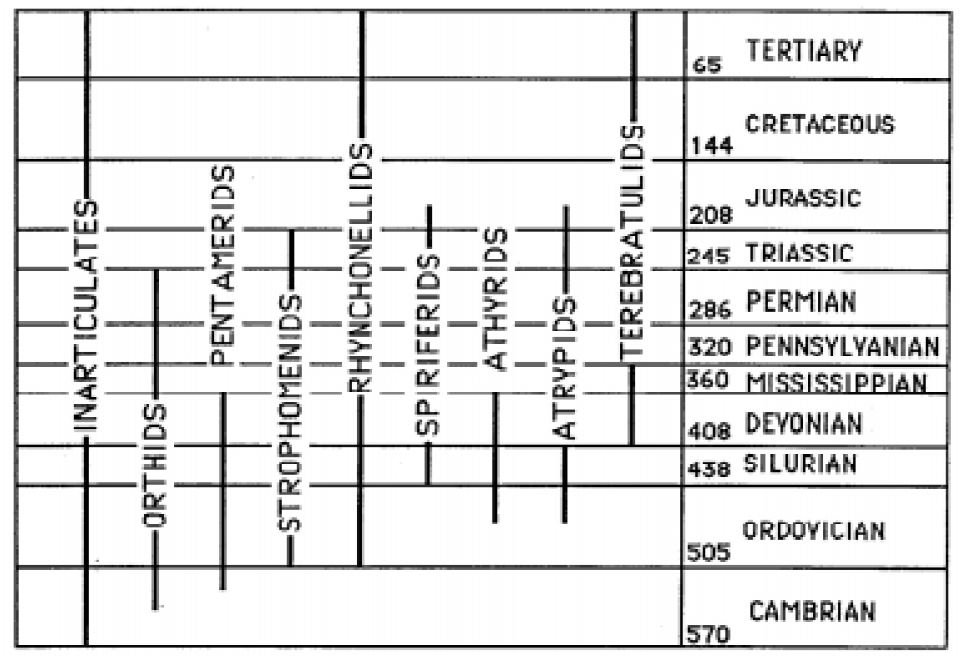Brachiopods
What is a brachiopod?
Brachiopods belong to the large category of animals without backbones, the invertebrates. They have two shells or valves that are often composed of the mineral calcite (calcium carbonate). Brachiopods have a coiled feeding organ called a lophophore that is protected by its valves.
There are two major divisions (Classes) of brachiopods: the inarticulate brachiopods and the articulate brachiopods.
Some of the oldest shelly invertebrate fossils known are brachiopods. They have a fossil record stretching back to the start of the Cambrian Period, some 570 million years ago.

Brachiopods are still living in the world's oceans.
It is the brachiopod valves that are often found fossilized. On the inside surface of some, muscle scars or the support structure for the lophophore may be found.
Where do they live?
Brachiopods live on the ocean floor. They have been found living in a wide range of water depths from very shallow waters of rocky shorelines to ocean floor three and a half miles beneath the ocean surface. They are known from many places, ranging from the warm tropical waters of the Caribbean to cold Antarctic seas. Fossil brachiopods in sedimentary rocks indicate ancient marine environments.
Stobo Mound
A few miles east of Bloomington you can see a low cut in the grey limestone on the north side of the highway. It is in a valley just east of Gettys Creek Road where you can park. The rock consists mostly of small fossils.
The rock in this roadcut is part of a resistant mound of fossils built up in the lower part of the Edwardsville formation of Mississippian age. You can see crinoids, blastoids, brachiopods, and bryozoans. Even though they look like plants, all of the fossils were marine animals.

To get credit for the earthcache, please send the answers to my profile account.
-
Find a brachiopod fossil and measure it.
-
Compare the size to other fossil types in the roadcut.
-
Post a picture of yourself (face not required) or a personal item at the site.